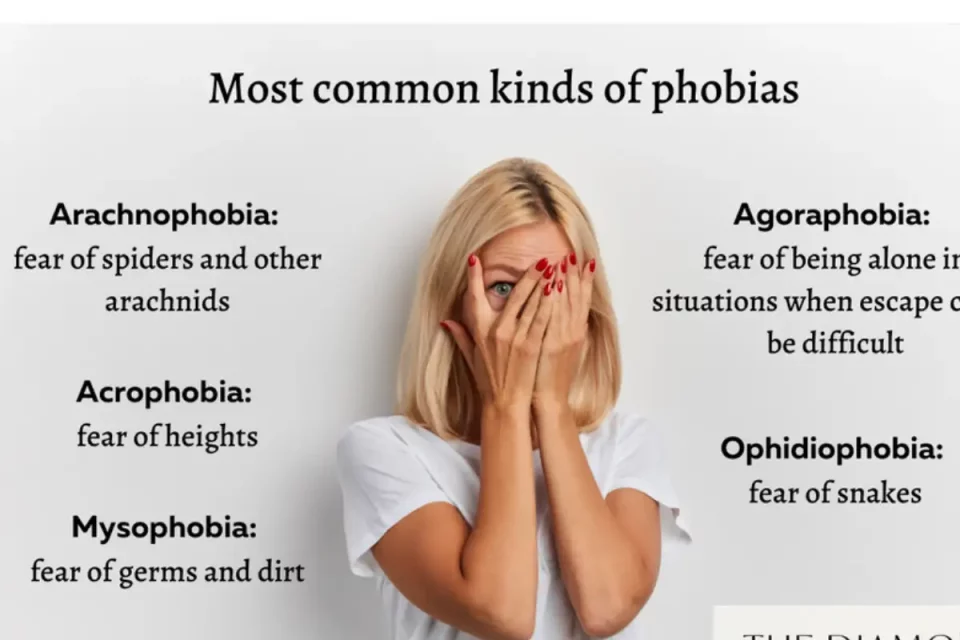Phobia: Brief Strategic Therapy: a technique to treat phobias: A phobia an anxiety disorder characterized by an extreme and debilitating fear of a place, situation, animal, or feeling. It is often irrational, either by its very nature or by the level of anxiety experienced, often leading patients to do everything possible to avoid the source of that fear.
There are countless phobias, but we can group them into two main categories: specific/simple phobias and complex phobias.
Simple phobias, also known as specific phobias, usually develop in childhood or adolescence. These include animal phobias, environmental phobias (e.g., heights, germs, deep water), bodily phobias (e.g., blood, vomiting, injections), sexual phobias (e.g., STIs, performance anxiety), and situational phobias (e.g., flying, visiting hospitals, stage fright, etc.).
Complex phobias usually develop in adulthood and involve intense fear and anxiety caused by a particular situation. The most common are agoraphobia and social phobia. These tend to be more debilitating than simple phobias, seriously affecting the lives of patients.
The most mutual phobias are arachnophobia (fear of spiders), ophidiophobia (fear of snakes), acrophobia (fear of heights), claustrophobia (fear of small spaces), and agoraphobia (fear of open spaces and public).
Also Read: Rheumatism: What it is, Symptoms, Treatment
Table of Contents
What are the symptoms?
Some people with phobias may not experience any symptoms until they face what they fear, while others may panic just thinking about it. As an anxiety disorder, the following symptoms may manifest:
- Fast heart rate/palpitations
- Sweating
- Sickness
- Mild dizziness/dizziness
- Shortness of breath
- Tremors
- Abdominal pain/discomfort
Causes of how it occurs
It is usually challenging to say what causes a phobia, as each case is unique. Simple phobias are often traced to a particular event or trauma, or in some cases, are learned from influential figures in the patient’s childhood, such as parents or siblings. Genetics are believed to play a role in anxiety disorders, which means that some people may be born with a predisposition to developing phobias. To get more information about the terms such as unique in spanish.
Brief Strategic Therapy: a technique to treat phobias
A phobia is a fear of situations or things that are not dangerous. People who suffer from this problem recognize their way of acting as irrational, unreasonable, and exaggerated. Still, despite this, they avoid or try to avoid facing these situations or stimuli, which causes them a great interference in their daily lives.
Being afraid is a natural human reaction, a way of protecting oneself from the environment. However, if the fear runs out of control, it is limited, blocked, or its objective function is canceled, and it becomes a dysfunctional fear: panic attack and phobias.
The obstacle is not the fear itself but how that fear is managed. Faced with a problem, we feel fear, and if the chosen solution is wrong, that will make the fear continue permanently and turn into panic or phobia.
All these anxiety disorders have in common specific physiological symptoms such as:
- Excessive sweating
- Palpitations
- Tachycardia
- Feeling of suffocation
- Afraid
- Terror
- I was feeling imminent death that occurs in panic attacks.
How does Brief Strategic Therapy help to treat phobias?
Brief Strategic Therapy is a very effective therapy for such limiting problems as phobias. This therapy focuses on the physiological issues of the pathology to direct psychotherapy.
The goals of therapy are:
- Find out how the problem works.
- Analyze the logical solutions that the person puts into practice and that contribute even more to the persistence of the problem.
- Provide different solutions to the patient in the form of tasks to get them to unlock.
How does Brief Strategic Therapy work?
Following the objectives mentioned in the previous section, brief strategic therapy provides the patient with a small initial change by providing solutions in the form of tasks, since these allow the patient to realize their ability to positively face the feared situation, achieving significant changes and thus eliminating the anxiety disorder.
The technique used for phobias called: the worst fantasy. It consists of prescribing the patient set half an hour on his agenda every day and recall his worst fantasy, the most negative thoughts. During that half-hour, in a room isolated from noise, the patient must let himself be carried away by emotions; if you want to scream, cry, etc. Thus, by inducing the person to reenact their most terrible fears, they usually relax. The best way to solve a fear is to provoke it. Little by little, the specialist will increase the time to recall the fear, causing a more extraordinary confrontation that translates into courage and courage in the patient.

